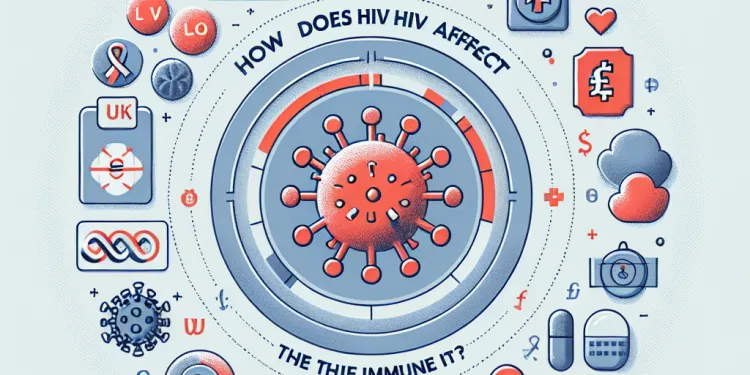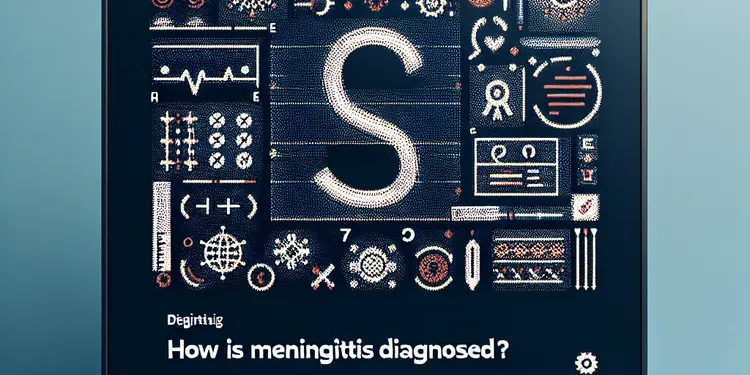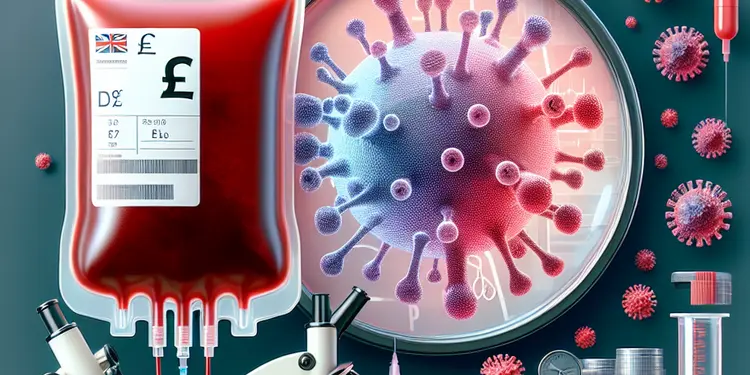
Find Help
More Items From Ergsy search
-

What does an undetectable viral load mean?
Relevance: 100%
-

Is it safe for a partner of someone with HIV to have children?
Relevance: 42%
-

Plantar Fascia Loading Exercise (High Load Exercise)
Relevance: 39%
-

Eccentric loading forearm extensors (for tennis elbow)
Relevance: 34%
-

How is viral meningitis spread?
Relevance: 31%
-

What causes viral meningitis?
Relevance: 31%
-

What is the prognosis for viral meningitis?
Relevance: 30%
-

What is antiretroviral therapy (ART)?
Relevance: 29%
-

What is HIV?
Relevance: 23%
-

What is HIV / AIDS?
Relevance: 21%
-

What is the difference between HIV and AIDS?
Relevance: 20%
-

How is HIV transmitted?
Relevance: 18%
-

How does HIV affect the immune system?
Relevance: 14%
-

Can people with HIV lead normal lives?
Relevance: 13%
-

Can HIV be cured?
Relevance: 13%
-

Is HIV only a concern for certain groups of people?
Relevance: 12%
-

Are there vaccines available for HIV?
Relevance: 11%
-

What is meningitis?
Relevance: 11%
-

Is meningitis contagious?
Relevance: 10%
-

What are the main types of meningitis?
Relevance: 10%
-

Why do some variants spread more easily?
Relevance: 10%
-

How is meningitis diagnosed?
Relevance: 10%
-

What is the most common disease transmitted by blood transfusion?
Relevance: 9%
-

Why is meningitis a medical emergency?
Relevance: 9%
-

Causes of a sore throat
Relevance: 9%
-

Can mosquitoes transmit any bacterial diseases in the UK?
Relevance: 8%
-

What causes motor neurone disease?
Relevance: 8%
-

Are there any long-term effects of Chikungunya infection?
Relevance: 8%
-

How long is the incubation period for the Marburg virus?
Relevance: 8%
-

What causes chronic fatigue syndrome?
Relevance: 8%
-

HIV and pregnancy | NHS
Relevance: 7%
-

How soon do symptoms appear after infection?
Relevance: 7%
-

Treating a sore throat
Relevance: 7%
-

What is AIDS?
Relevance: 7%
-

Can meningitis cause long-term complications?
Relevance: 7%
-

What role does stigma play in the HIV epidemic?
Relevance: 7%
-

Are there global differences in screening for blood transfusions?
Relevance: 7%
-

What is the Lightning Network?
Relevance: 7%
-

What is fomepizole and how does it work?
Relevance: 7%
-

What are common symptoms of meningitis?
Relevance: 7%
Understanding Viral Load
Viral load refers to the amount of HIV virus in a person's blood. It is measured by the number of copies of the virus per millilitre of blood. Keeping track of viral load is crucial for managing HIV effectively. By understanding a person’s viral load, healthcare professionals can determine how well an individual’s antiretroviral therapy (ART) is working.
What is an Undetectable Viral Load?
An undetectable viral load means that the level of HIV in the blood is so low that standard laboratory tests cannot detect it. This does not mean that the virus is completely absent from the body, but it indicates effective suppression of the virus through consistent use of ART. Achieving and maintaining an undetectable viral load is a key goal of HIV treatment.
The Importance of Undetectable Viral Load
Reaching an undetectable viral load has multiple benefits for people living with HIV. Firstly, it indicates that the individual's treatment regimen is effective, leading to better health outcomes. Secondly, it significantly reduces the risk of HIV transmission to sexual partners. The principle of 'Undetectable = Untransmittable' (U=U) highlights that individuals with sustained undetectable viral load cannot sexually transmit the virus to others.
How Is Viral Load Tested?
Viral load testing is a standard part of HIV care in the UK. Tests are typically conducted every few months, depending on the individual's health and treatment response. The tests involve a simple blood sample analysis to measure the number of virus particles. Results guide healthcare providers in making treatment decisions and managing the patient’s health.
Maintaining an Undetectable Viral Load
To maintain an undetectable viral load, adherence to ART is crucial. This means taking HIV medication daily as prescribed without missing doses. Regular medical appointments to monitor the condition and adjust treatment if necessary are also important. Lifestyle factors, such as healthy eating and avoiding substance use, can support overall well-being and the effectiveness of treatment.
Conclusion
Having an undetectable viral load is a significant achievement in the management of HIV. It not only improves the health and quality of life for those living with the virus but also plays a critical role in HIV prevention. The availability of effective ART and regular monitoring allows many individuals to live full, healthy lives while preventing transmission to others. Continuous education and support are essential to help more people reach and maintain this important milestone.
Frequently Asked Questions
What does undetectable viral load mean?
An undetectable viral load means that the amount of HIV in the blood is so low that standard lab tests cannot detect it.
How is an undetectable viral load achieved?
An undetectable viral load is typically achieved through consistent and effective antiretroviral therapy (ART).
Does undetectable viral load mean the HIV is cured?
No, undetectable does not mean cured. The virus is still present in the body but at levels too low to be detected by standard tests.
Can someone with an undetectable viral load transmit HIV?
Evidence shows that individuals with an undetectable viral load cannot sexually transmit HIV to others, a concept known as U=U (Undetectable = Untransmittable).
How often should viral load be tested?
Viral load should be tested regularly, often every 3 to 6 months, to ensure it remains undetectable.
Can viral load fluctuate and become detectable again?
Yes, if ART is not taken consistently, or due to other factors, the viral load may become detectable again.
What are the benefits of having an undetectable viral load?
Benefits include reduced risk of HIV transmission, better health outcomes, and prevention of HIV-related illnesses.
Is it possible for all HIV-positive individuals to achieve an undetectable viral load?
While many can achieve undetectable status with ART, factors such as adherence to medication and drug resistance can affect outcomes.
What is viral suppression?
Viral suppression refers to lowering the viral load to undetectable levels.
How quickly can someone achieve an undetectable viral load after starting ART?
It varies, but many achieve an undetectable viral load within 6 months of starting ART.
Will I need to stay on ART if my viral load is undetectable?
Yes, continuing ART is essential to maintain an undetectable viral load and prevent the virus from rebounding.
Can pregnancy affect undetectable viral load?
Pregnant individuals on ART can maintain an undetectable viral load, reducing the risk of transmitting HIV to the baby.
What happens if I miss ART doses?
Missing doses can lead to an increase in viral load, which may become detectable again.
Is drug resistance possible if viral load is undetectable?
While drug resistance is less likely with undetectable viral load, it can occur if ART adherence is poor.
Can lifestyle changes impact viral load?
Regular medication adherence is crucial, but healthy lifestyle choices can support overall health and HIV management.
Do other infections affect viral load status?
Some infections may cause temporary increases in viral load, highlighting the importance of managing overall health.
How does drug resistance affect viral load tests?
Resistance may cause ART to be less effective, potentially leading to detectable viral loads.
Are viral load tests the same as CD4 count tests?
No, viral load tests measure HIV in blood, while CD4 count tests measure immune system health.
What should I do if my viral load becomes detectable again?
Contact your healthcare provider to assess ART adherence and adjust treatment if necessary.
Is it possible to have an undetectable viral load with drug-resistant HIV?
It's challenging, but some may achieve undetectable levels with specialized ART regimens.
Useful Links
- Ergsy carfully checks the information in the videos we provide here.
- Videos shown by Youtube after a video has completed, have NOT been reviewed by ERGSY.
- To view, click the arrow in centre of video.
- Most of the videos you find here will have subtitles and/or closed captions available.
- You may need to turn these on, and choose your preferred language.
- Go to the video you'd like to watch.
- If closed captions (CC) are available, settings will be visible on the bottom right of the video player.
- To turn on Captions, click settings .
- To turn off Captions, click settings again.
More Items From Ergsy search
-

What does an undetectable viral load mean?
Relevance: 100%
-

Is it safe for a partner of someone with HIV to have children?
Relevance: 42%
-

Plantar Fascia Loading Exercise (High Load Exercise)
Relevance: 39%
-

Eccentric loading forearm extensors (for tennis elbow)
Relevance: 34%
-

How is viral meningitis spread?
Relevance: 31%
-

What causes viral meningitis?
Relevance: 31%
-

What is the prognosis for viral meningitis?
Relevance: 30%
-

What is antiretroviral therapy (ART)?
Relevance: 29%
-

What is HIV?
Relevance: 23%
-

What is HIV / AIDS?
Relevance: 21%
-

What is the difference between HIV and AIDS?
Relevance: 20%
-

How is HIV transmitted?
Relevance: 18%
-

How does HIV affect the immune system?
Relevance: 14%
-

Can people with HIV lead normal lives?
Relevance: 13%
-

Can HIV be cured?
Relevance: 13%
-

Is HIV only a concern for certain groups of people?
Relevance: 12%
-

Are there vaccines available for HIV?
Relevance: 11%
-

What is meningitis?
Relevance: 11%
-

Is meningitis contagious?
Relevance: 10%
-

What are the main types of meningitis?
Relevance: 10%
-

Why do some variants spread more easily?
Relevance: 10%
-

How is meningitis diagnosed?
Relevance: 10%
-

What is the most common disease transmitted by blood transfusion?
Relevance: 9%
-

Why is meningitis a medical emergency?
Relevance: 9%
-

Causes of a sore throat
Relevance: 9%
-

Can mosquitoes transmit any bacterial diseases in the UK?
Relevance: 8%
-

What causes motor neurone disease?
Relevance: 8%
-

Are there any long-term effects of Chikungunya infection?
Relevance: 8%
-

How long is the incubation period for the Marburg virus?
Relevance: 8%
-

What causes chronic fatigue syndrome?
Relevance: 8%
-

HIV and pregnancy | NHS
Relevance: 7%
-

How soon do symptoms appear after infection?
Relevance: 7%
-

Treating a sore throat
Relevance: 7%
-

What is AIDS?
Relevance: 7%
-

Can meningitis cause long-term complications?
Relevance: 7%
-

What role does stigma play in the HIV epidemic?
Relevance: 7%
-

Are there global differences in screening for blood transfusions?
Relevance: 7%
-

What is the Lightning Network?
Relevance: 7%
-

What is fomepizole and how does it work?
Relevance: 7%
-

What are common symptoms of meningitis?
Relevance: 7%